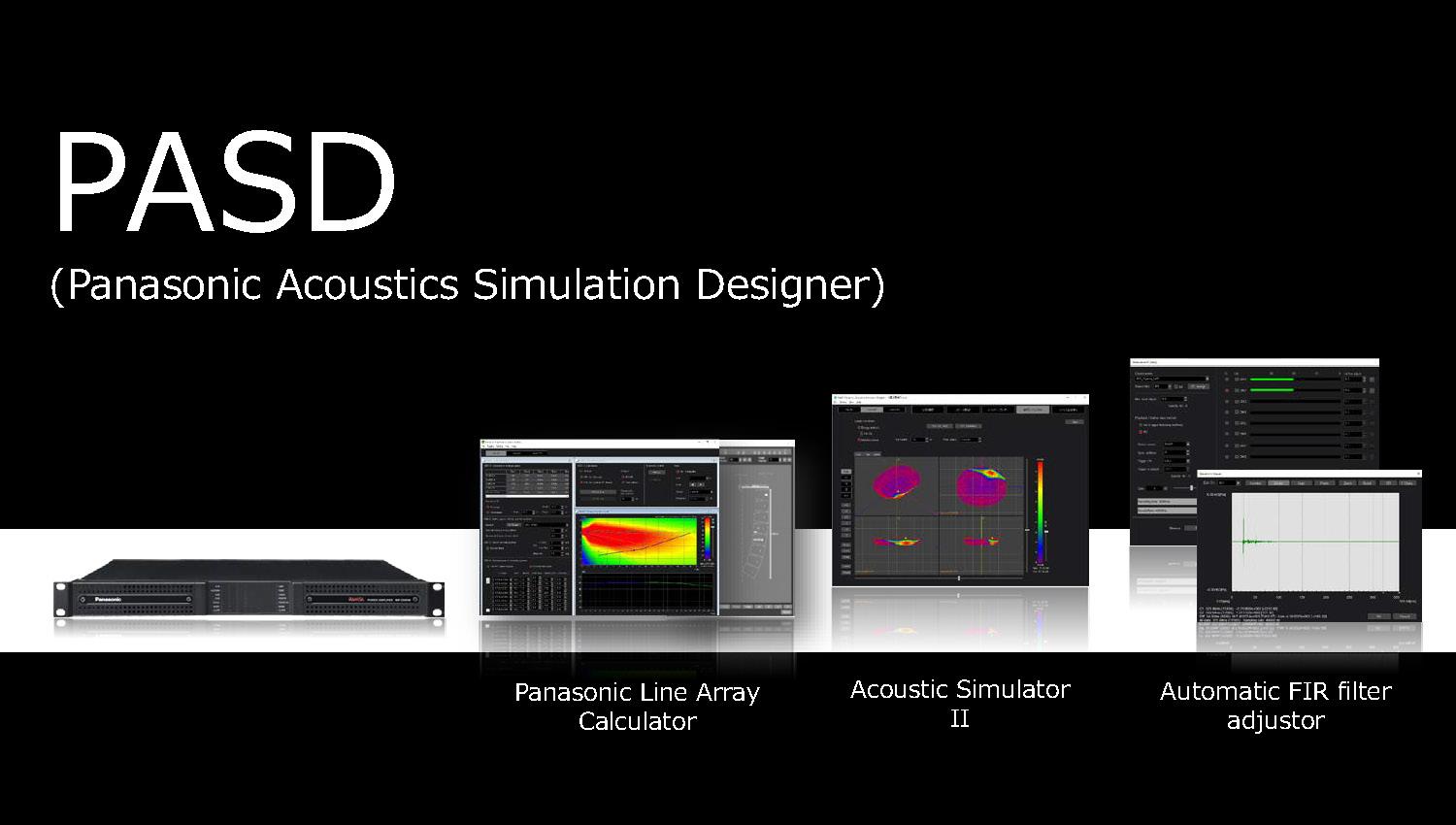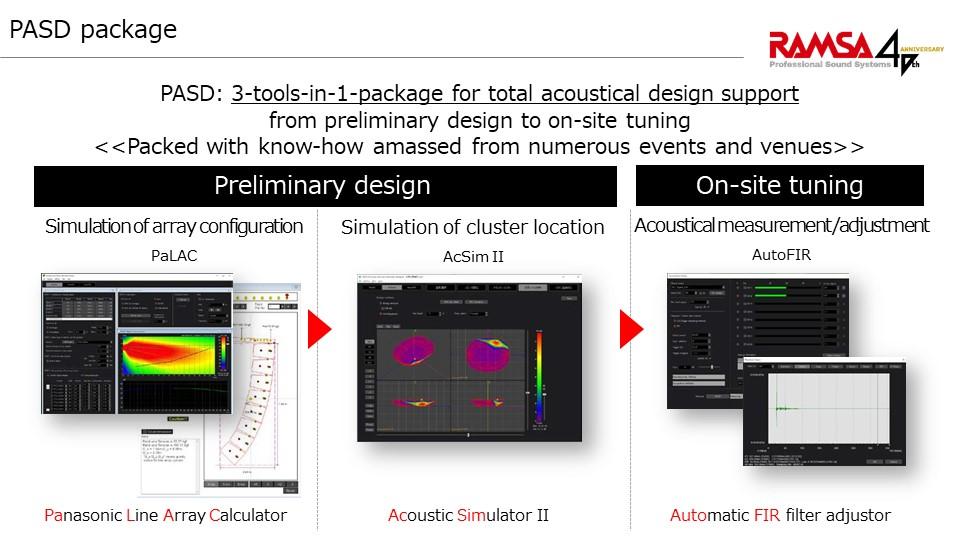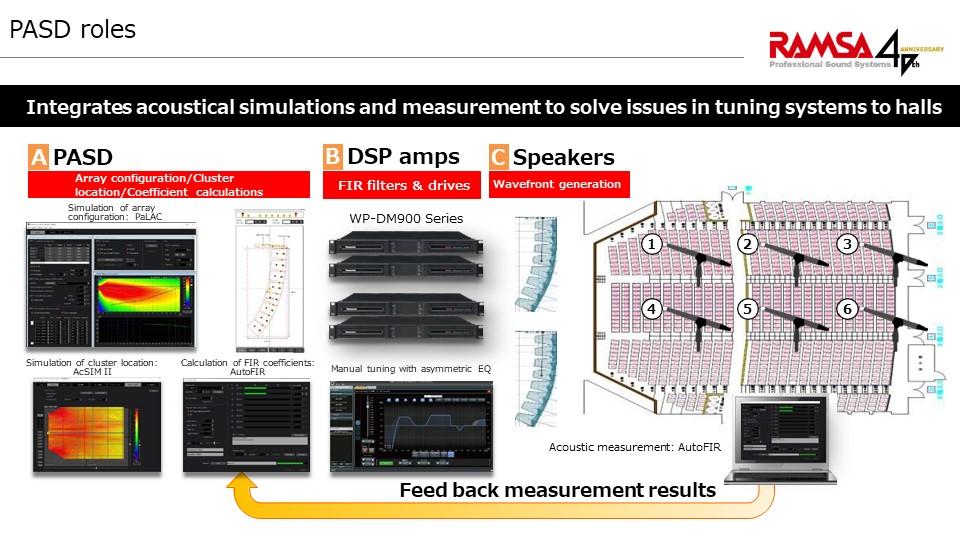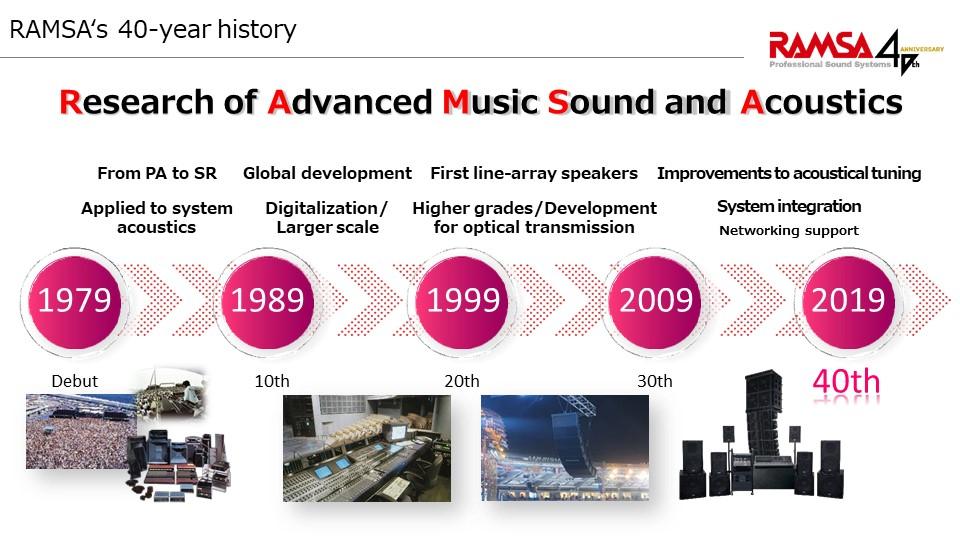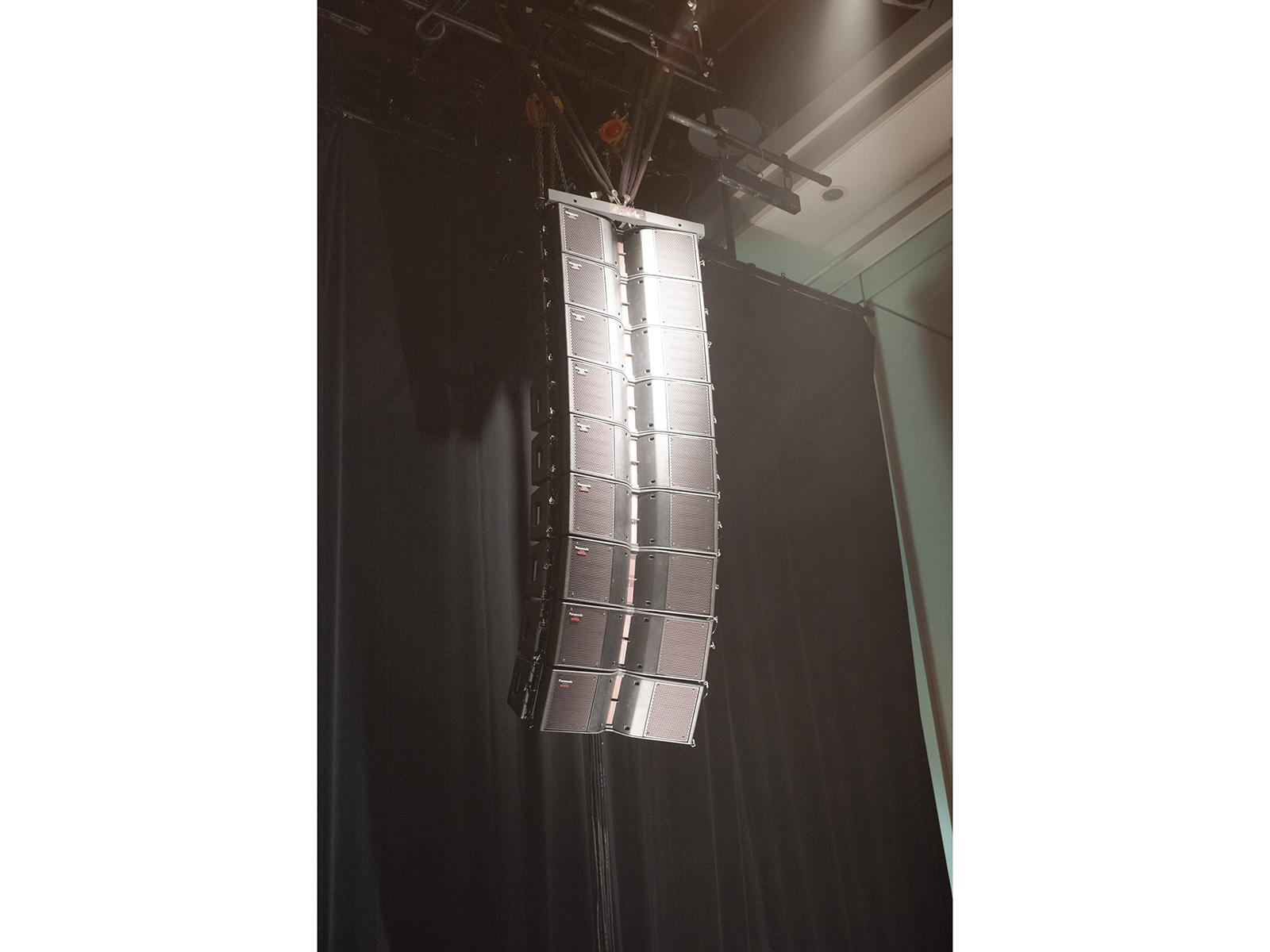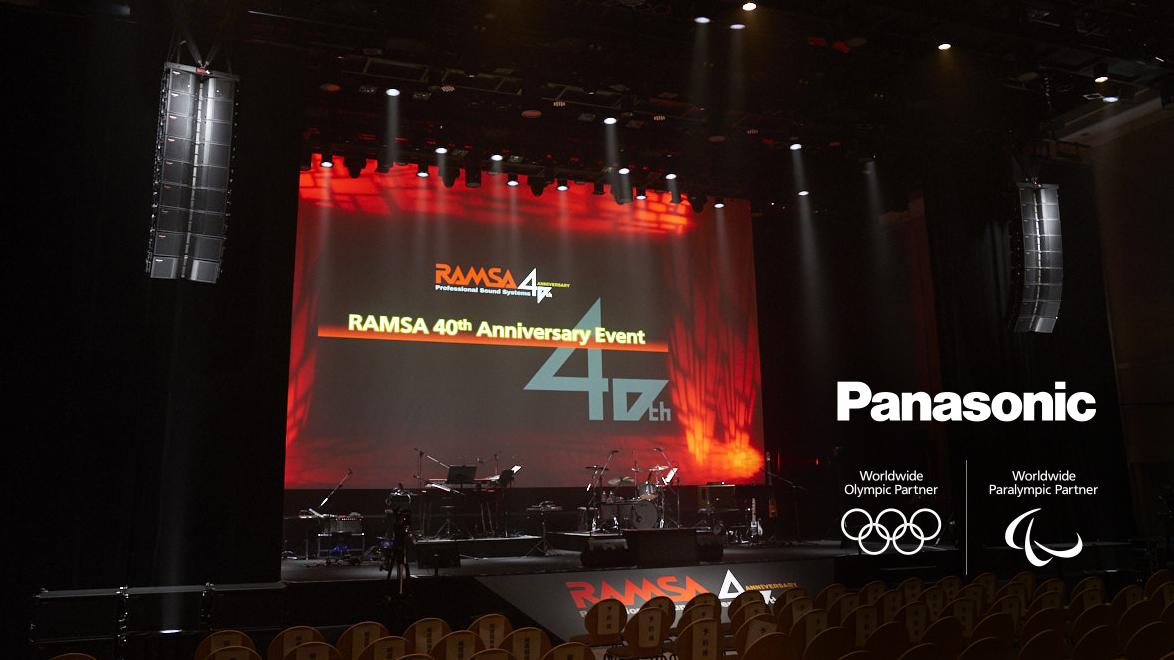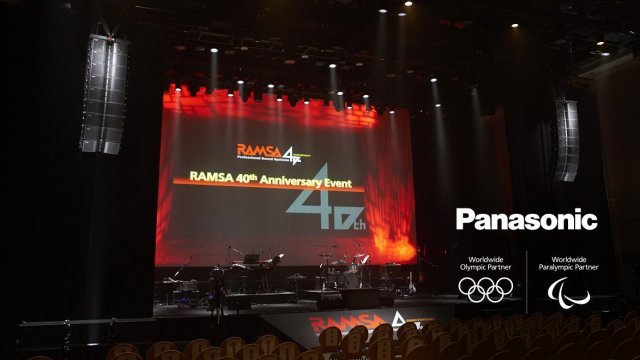
This year, the RAMSA brand of professional audio equipment and systems that Panasonic developed for theaters, halls, arenas and other venues is marking its 40th anniversary. Since making its Olympic debut at the Nagano 1988 Winter Games, it has supported the games with advanced technology aimed at "producing sound that closes the distance between the stage and audience into an integrated acoustical environment unaffected by the site influences. This article introduces the latest sound and spatial technologies that Panasonic has readied for 2020.
Pooling Knowledge to Realize Acoustical Perfection
Realizing RAMSA's goal of a "single sound environment that integrates the stage and audience" calls for a design that, even with stadiums and arenas that hold tens of thousands of people, ensures the sound coming from the main stage is the same loudness and quality in every seat in the house. This requires technology for controlling the sound reflection that comes from speakers.
Panasonic has amassed a great deal of know-how in this regards not just by developing and providing sound systems but also by taking part in the acoustical design process by installing and tuning those systems to the halls where they are used. All of this know-how is packaged into an acoustical simulation platform dubbed "Panasonic Acoustic Simulation Designer" (PASD).
PASD Greatly Shortens Acoustical Tuning after System Installation
Before, there were limits to what could be done with the preliminary simulations prior to delivering sound equipment to a site, which made post-installation tuning all that more of a challenge. However, PASD runs highly accurate simulations that greatly shorten the amount of time needed to tune the equipment after installing it at the site.
For the main speakers, large halls require line-array speakers - multiple cabinets stacked into a column. To work with these line-array speakers, PASD packages three application tools: Panasonic Line Array Calculator (PaLAC) for exploring speaker configuration (number and angle of cabinets), Acoustic Simulator (AcSim) II for simulating speaker cluster location (arrangement for line-array speakers) and Automatic FIR filter adjuster (AutoFIR) for measuring and adjusting hall acoustics.
PaLAC predicts at what distance from the audience seats the speakers should be installed, how many cabinets should be arranged into a cluster, at what angle each cabinet should face and other particulars against seating area configuration, which is based on a 2-dimensional profile drawing of the hall. It also can simulate on computer ahead of time how to install equipment so that loudness at the front and back of the hall is the same.
AcSim II guides the location of the speaker clusters. 3-dimensional CAD drawings of the hall are input to verify the location and configuration of seating areas from above. Then, after deciding the direction in which the speaker clusters should face and inputting their locations, simulations can be run to see how uniform the sound pressure level, clarity and other characteristics are across the seating area.
Once the speakers have been installed in the hall, it is AutoFIR's turn. Test signals are output from the speakers and the sound picked up by microphones is analyzed on computer in order to calculate the parameters for offsetting the difference between simulations and actual results. No longer is it necessary to tweak EQ parameters one by one while watching a waveform on a measuring instrument, like before. By sending these parameters to the DSP built into the amp, acoustical tuning is completed in a short amount of time. This leaves more time to adjust the sound to what the artist wants to produce, which should give the audience more of what they came for.
PASD does not require a special system to use it; a laptop computer is OK. Moreover, PASD is given to retailers that deal in supported RAMSA products for free after attending a seminar on the acoustics simulation platform. Users have given PASD a thumbs-up not just for the accuracy of the simulations it runs but also for the ease with which it can be used.
Reliable in the Most Extreme Environments - RAMSA Brand
The RAMSA brand debuted in August 1979, at an outdoor rock music festival on Enoshima Island off Kanagawa Prefecture. Despite the blistering heat and large venue, it was highly rated and established its reliability as a brand. Since then, systems and equipment have been delivered to many public halls, theaters and other locations across Japan.
For the first 10 years, the RAMSA brand met the acoustical needs of stages and halls mostly with analog technology. After that, it continued to evolve with the times, i.e., digitalization, large system support, global development, networking support, etc. The brand made its Olympic debut with all-weather speakers at the Nagano 1988 Winter Games and the first-ever line-array speakers were developed and delivered to the Athens 2004 Games. Since then, the RAMSA brand has delivered quality sound systems in the Olympic and Paralympic Games.
The Road of Evolution Continues to 2020 and Beyond
According to a study by the Japan Concert & Live Entertainment Promoter's Conference released on March 29, 2018, the number of live performances in Japan about doubled in the ten years from 2008 to 2017. So, halls and venues needing a professional sound system are still expected to grow in number. In the leadup to the Olympic and Paralympic Games Tokyo 2020, as well as beyond, Panasonic will continue to hone its RAMSA technologies in order to give performers better means for moving their audiences.
Line-array speaker composed of 9 cabinets. It was acoustically designed using PASD to deliver powerful live sound to every seat in the house.
# # #
- Disclaimer:
- We would like to note that Panasonic Newsroom is not a place to address personal Customer Service issues. Even though this is not the forum, Panasonic is always eager to resolve your concerns. Our local customer services contacts can be found at Global Support or you can see our list of Social Media Accounts to find the right channel for your queries and concerns.
Related Links
Related News
- Adroit Visuals That Track an Athlete's Movements - A New Age in Experience Value Engineered by Sports x Technology (Sep 04, 2019)
- [Press Release] Panasonic's Real-time Tracking and Projection Mapping Compatible Projector Impresses Audience at Tokyo 2020's "One Year to Go" Ceremony (Jul 24, 2019)
- Panasonic Delivers a Wide Range of Solutions and Equipment for Staging the Olympic Winter Games PyeongChang 2018 (Feb 12, 2018)

